Mamandur Pallava Cave Temple: A 7th Century Cave Temple Architectural Marvel by Pallava King Mahendravarman in Dusi Mamandur / Narasamangalam, Tiruvannamalai, Near Kanchipuram – Visit, History, and Travel Guide (Updated)
– pallava rock-cut cave temple representing the grandeur of pallava architecture
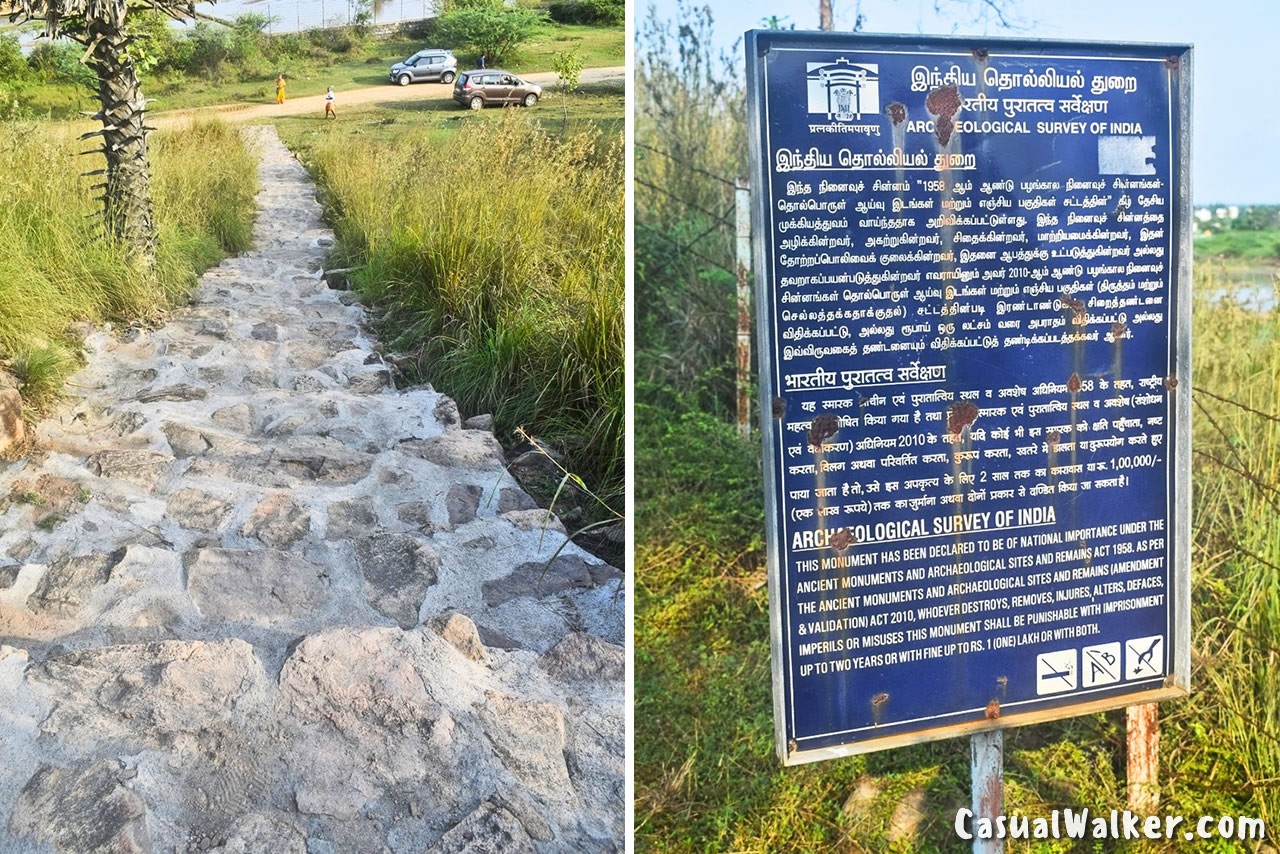
History of Mamandur Pallava Cave Temple
Mamandur served as the erstwhile capital of the Pallavas. During the reign of Mahendravarman I (600–630 CE), the Pallava king initiated a remarkable effort to construct temples solely from stone. Despite Mamandur’s proximity to the capital, Mahendravarman I chose Mandagapattu for his pioneering attempt at stone temple construction. The reasons behind this choice remain speculative, ranging from an oversight to a calculated decision. A Tamil Brahmi inscription in a natural cavern at Mamandur dates back to the 2nd–3rd century CE. It records a chieftain’s gift of the cavern after conquering Torur. While such caverns were often associated with Jain monks, it remains unclear whether this cavern served that purpose. Later, during the early 7th century CE, Mahendravarman I constructed several cave temples at Mamandur, leaving an indelible mark on the village’s history.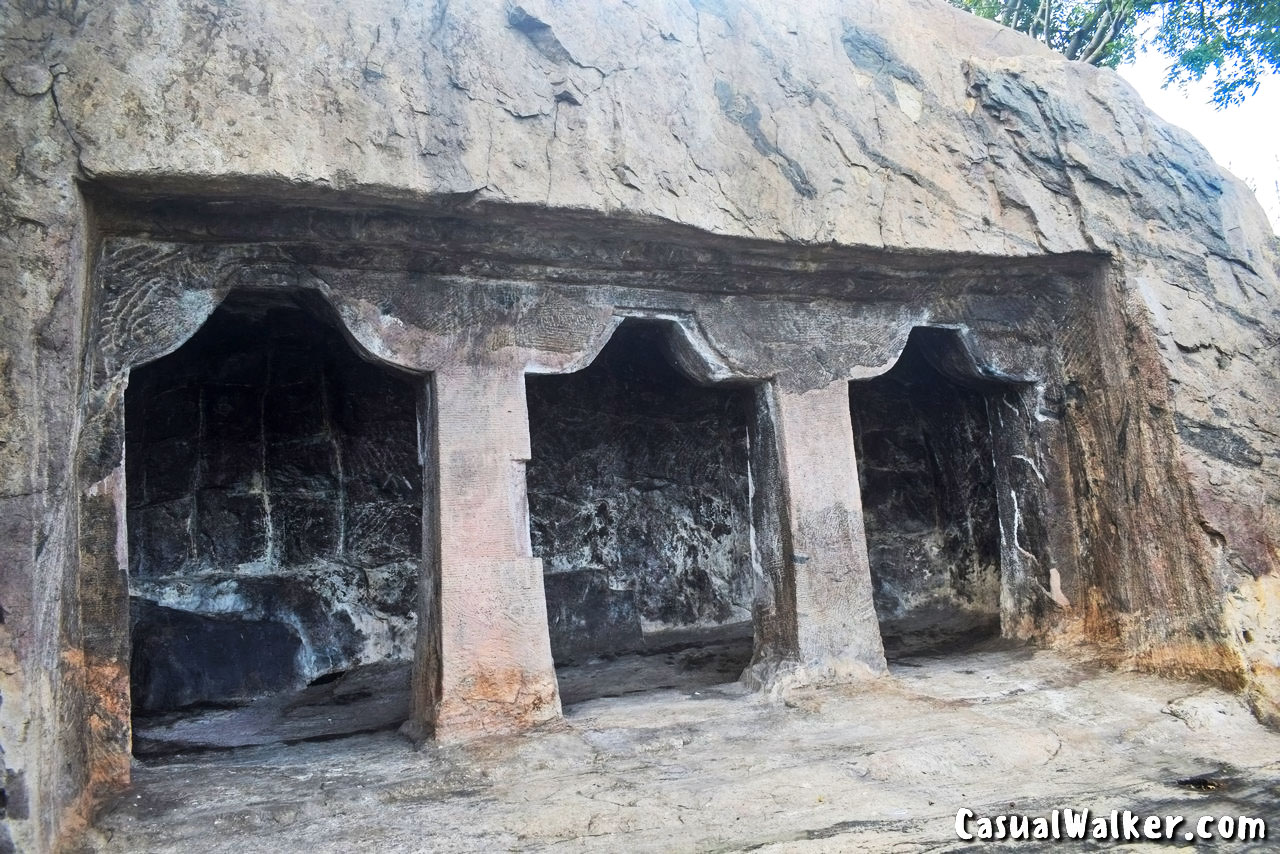 The nearby tank, referred to in Chola inscriptions as Chitramegha-tataka or Chittiramegha-tataka, is believed to have been excavated by Mahendravarman I, who bore the title “Chitramegha.” By the 10th and 11th centuries CE, during the Chola period, Mamandur was known as Mavandur in Narasingamangalam (or Narasimhamangalam). This name is speculated to honor the Pallava king Narasimhavarman I (630–668 CE). Some sources suggest Mamandur’s earlier name might have been Mahendramangalam, though no concrete evidence supports this theory.
The nearby tank, referred to in Chola inscriptions as Chitramegha-tataka or Chittiramegha-tataka, is believed to have been excavated by Mahendravarman I, who bore the title “Chitramegha.” By the 10th and 11th centuries CE, during the Chola period, Mamandur was known as Mavandur in Narasingamangalam (or Narasimhamangalam). This name is speculated to honor the Pallava king Narasimhavarman I (630–668 CE). Some sources suggest Mamandur’s earlier name might have been Mahendramangalam, though no concrete evidence supports this theory.
Mamandur Pallava Cave Temple – Chola Contributions
Chola inscriptions found at Mamandur provide valuable insights into the village’s significance during their rule. An inscription from the reign of Uttama Chola (970–985 CE) indicates that the village fell under the division of Madurantaka-chaturvedi-mangalam. Later inscriptions, including one from Rajaraja I’s reign (985–1014 CE), document donations made to temples in the region. However, Mamandur’s prominence appears to have declined after this period.Four Cave Temples of Mamandur
Mamandur is home to four remarkable rock-cut shrines, numbered 1 to 4 by the Archaeological Survey of India (ASI). These caves reflect the Pallava dynasty’s architectural ingenuity.Cave Temple 1 – Northern Cave Temple
The Northern Cave Temple is the northernmost shrine in the series, facing east. It features a mukha-mandapa leading to a shrine at the rear, excavated 4 feet above ground level. The facade comprises two pillars and two pilasters, with cubic tops and bases (saduram) and octagonal middle sections (kattu). Lotus medallions adorn the square faces of the saduram, while the pilasters are fully tetragonal. Curved corbels rest above the pillars, and the kapota (cornice) is undecorated but shows traces of red-background lotus medallions, indicating past paintings.
Rear Shrine
The verandah’s southern wall bears an inscription, and the rear wall projects into a shrine with a platform likely for a movable image. Traces of paintings suggest the shrine once housed painted images. Scholars believe it may have been dedicated to Vishnu, based on comparisons with other shrines.Inscription
The northern wall of the mukha-mandapa features a Sanskrit inscription in Pallava Grantha characters, listing Pallava king Mahendravarman I’s achievements, including his contributions to music and his plays Mattavilasa-prahasana and Bhagavadajjukam.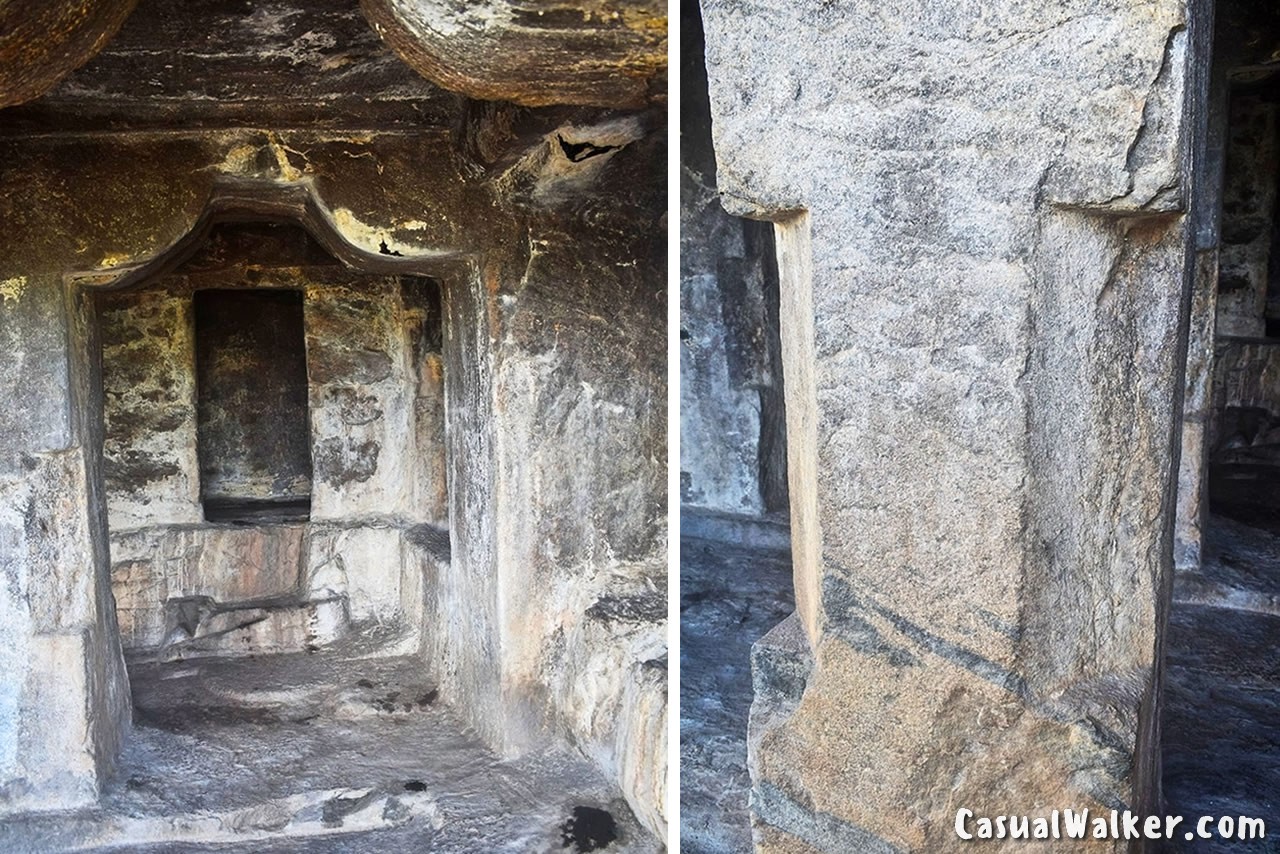
Cave Temple 2 – Rudravalisvaram Cave Temple
Located south of Cave Temple 1, this east-facing shrine includes a mukha-mandapa, an ardha-mandapa, and three shrines at the rear. Its facade features two pillars and two pilasters, similar in design to the first cave.
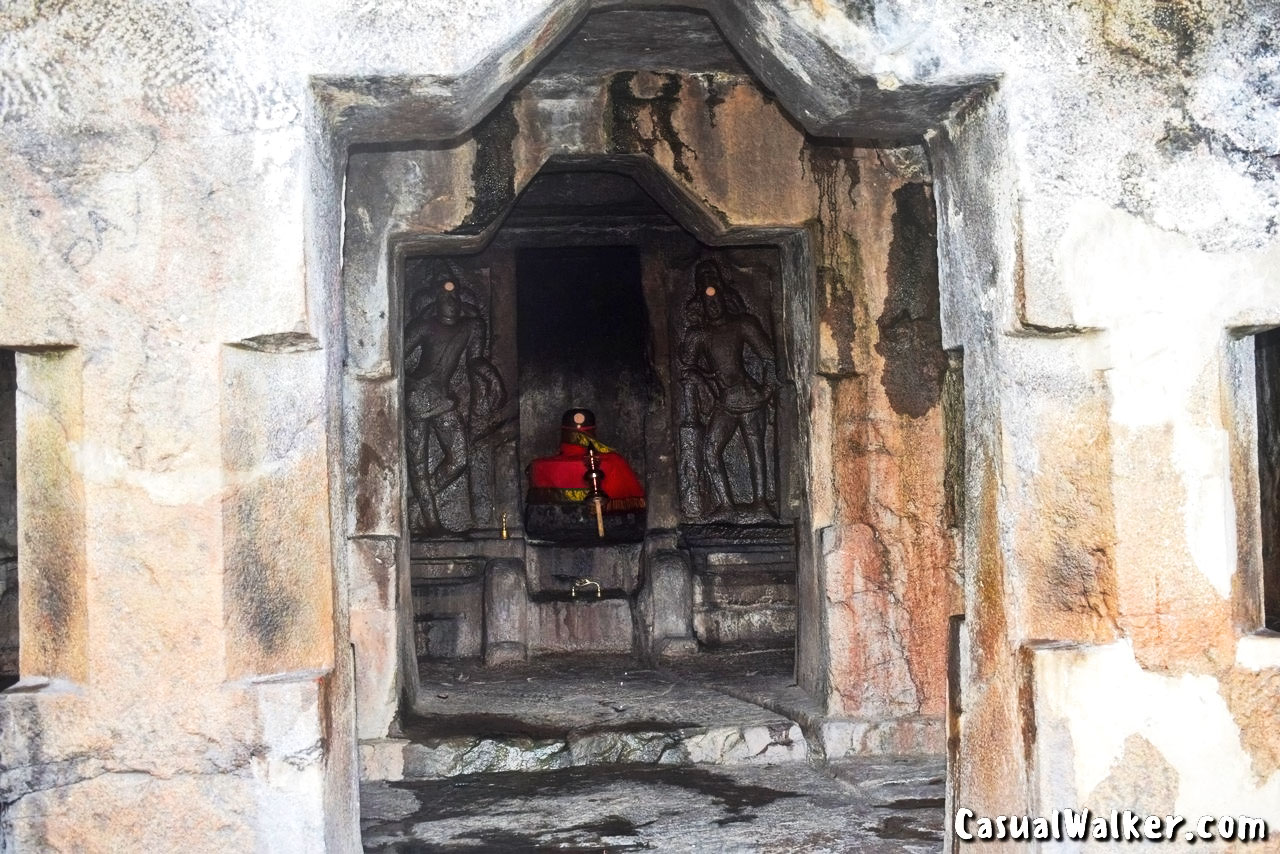
Three Shrines
The rear wall contains three shrines on a shared base with five moldings. Each shrine has two dvarpalas, a two-step staircase, and an elephant-trunk-shaped parapet. The central shrine, dedicated to Shiva, is confirmed by Chola inscriptions. The southern shrine may represent Brahma, while the northern shrine is believed to be for Vishnu.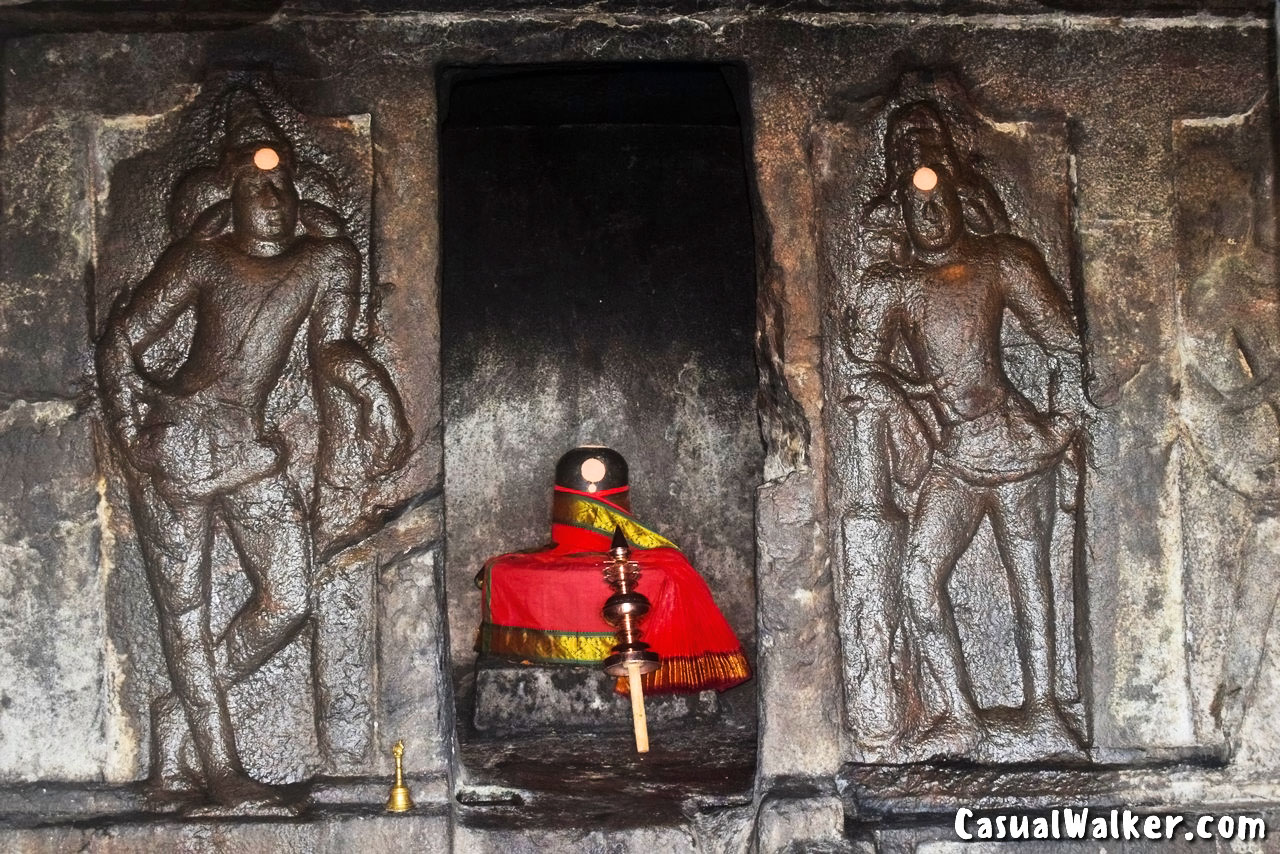
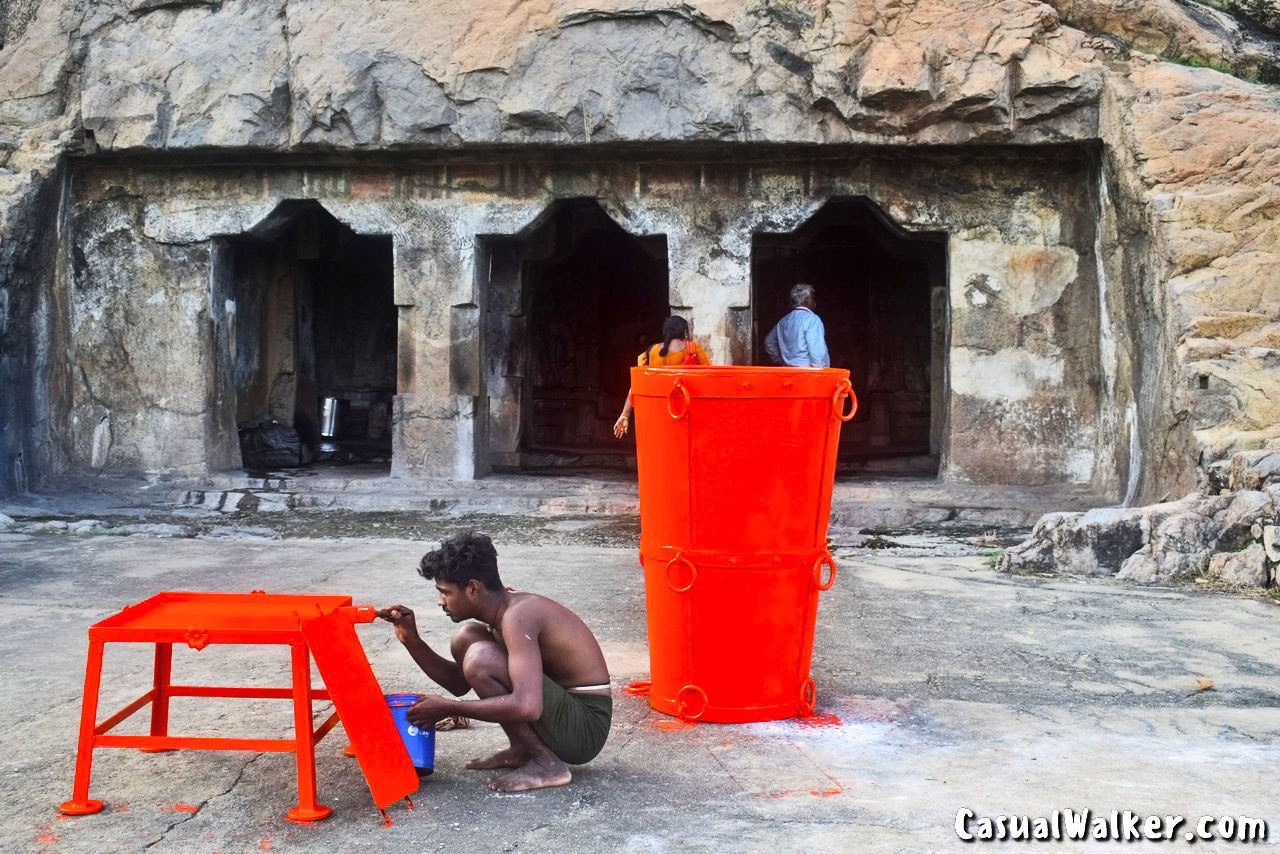
Inscriptions
Two Tamil inscriptions from the Chola period are present: 1. A gift of sheep for a lamp by merchants and shepherds (15th regnal year of Uttama Chola). 2. A gift of sheep for temple maintenance (16th regnal year of Rajaraja I, 1001 CE).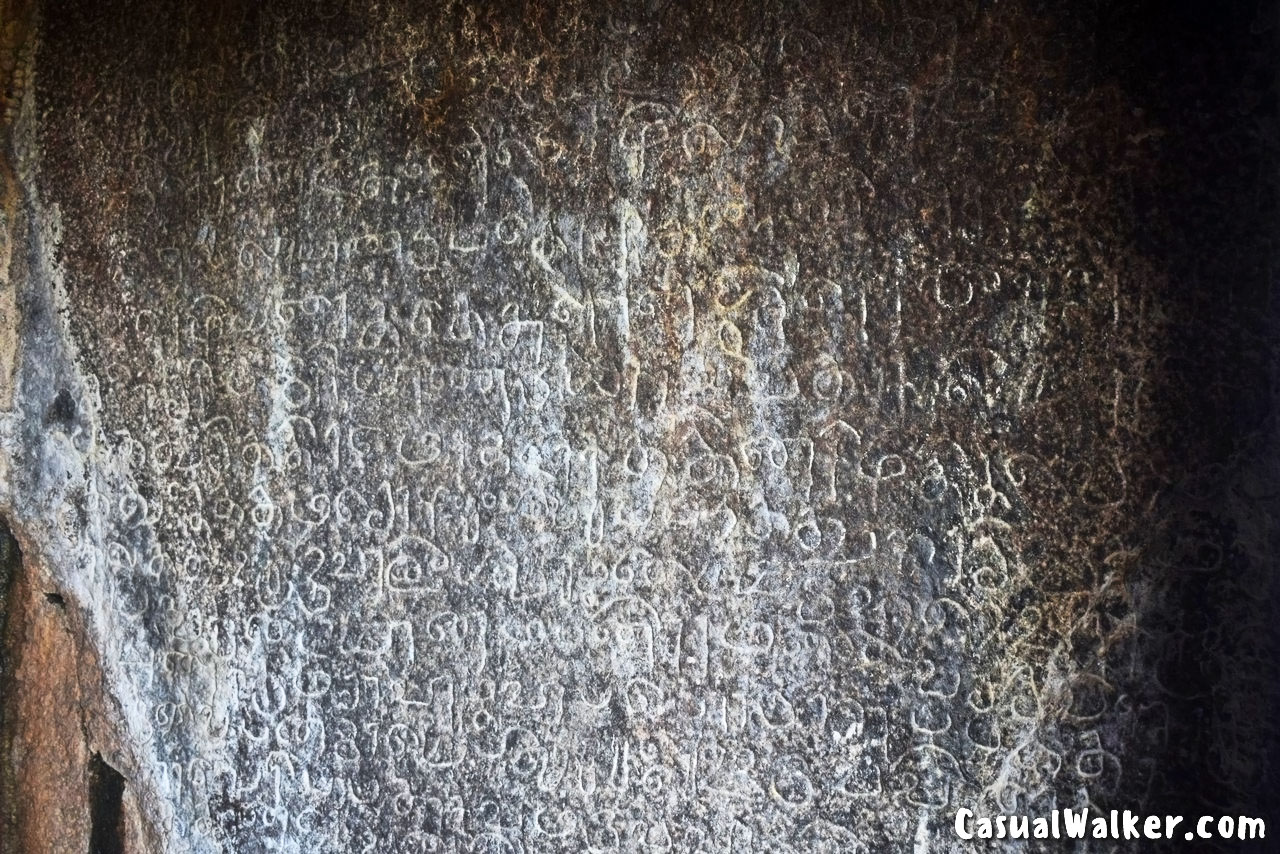
Cave Temple 3
This is the largest shrine in the series, open on its eastern and southern sides. Its facade features five pillars and two pilasters on the eastern side, and two pillars and two pilasters on the southern side. The shrine contains five rear shrines and additional unfinished cells on the lateral walls, suggesting the rock’s instability hindered construction.Cave Temple 4
The southernmost and smallest of the group, this east-facing shrine consists of a mukha-mandapa leading to niches for deities. Its facade has two pillars and two pilasters. Construction was incomplete due to faults in the rock. Scholars attribute this shrine to Narasimhavarman I’s reign, as the village’s name, Narasingamangalam, hints at his legacy.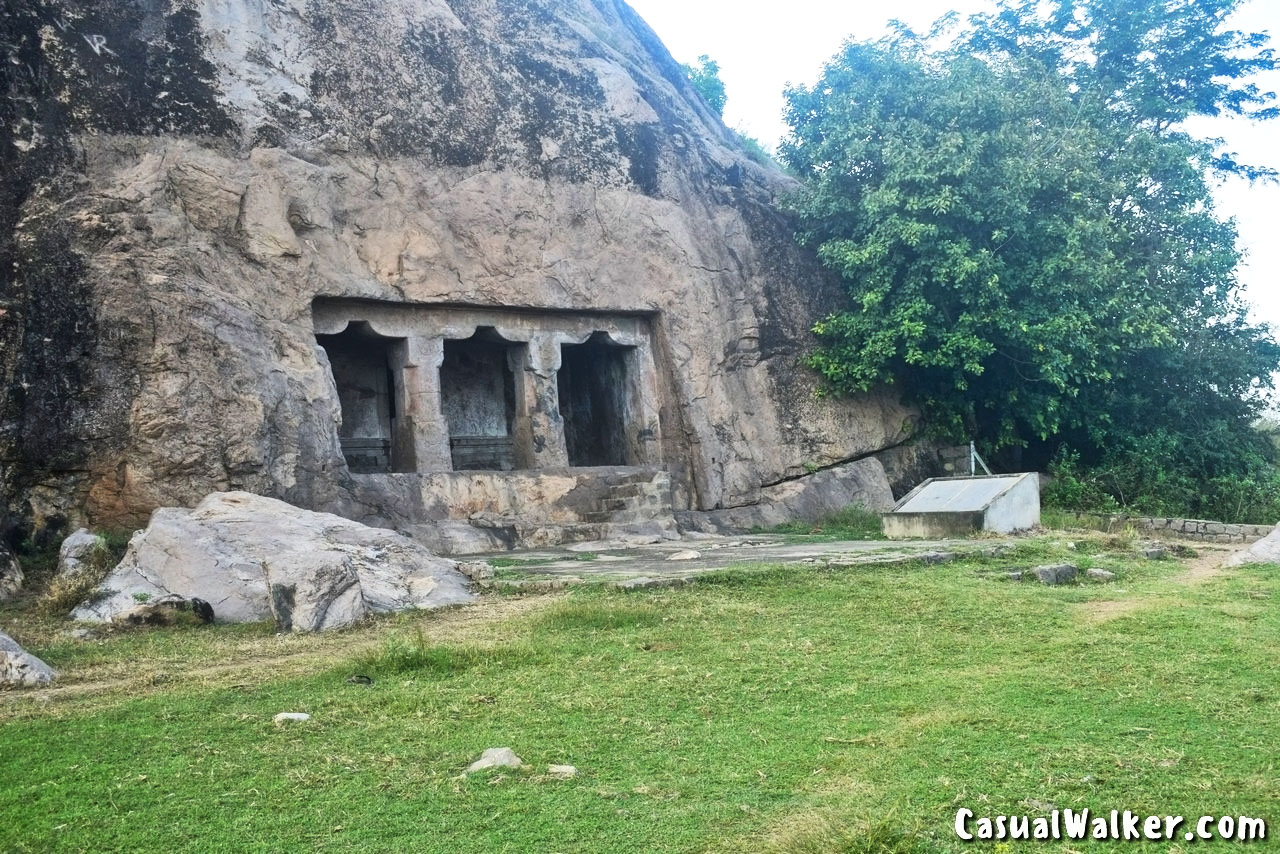
Jalakandeswarar Hill Temple, in Mamandur
The Jalakandeswarar Hill Temple is located near the famous Mamandur cave temples. Perched atop a hill, this temple is dedicated to Lord Shiva, known here as Jalakandeswarar. Reaching the temple requires a short trek, offering visitors a chance to enjoy the serene surroundings and panoramic views of the area. The trek enhances the spiritual experience, making the visit to this hill temple a memorable one.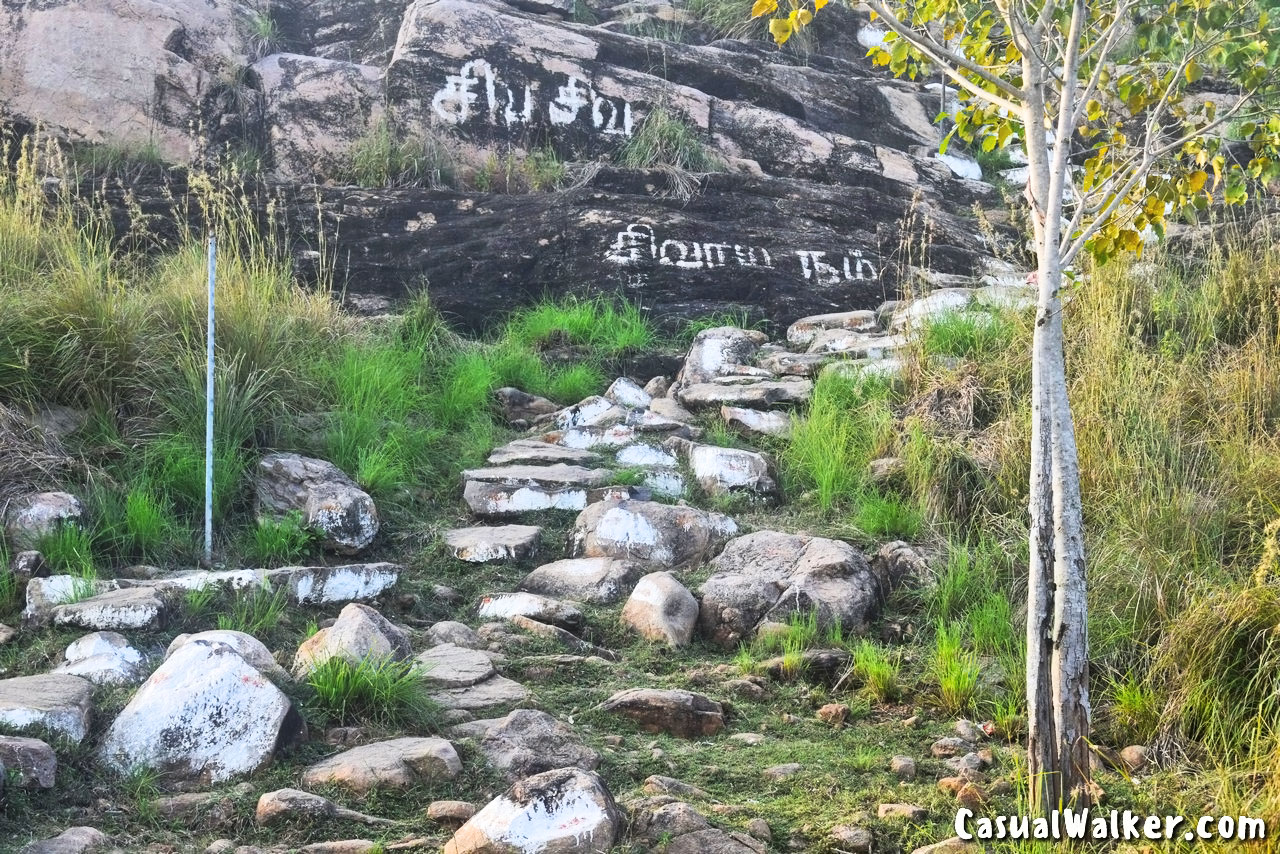
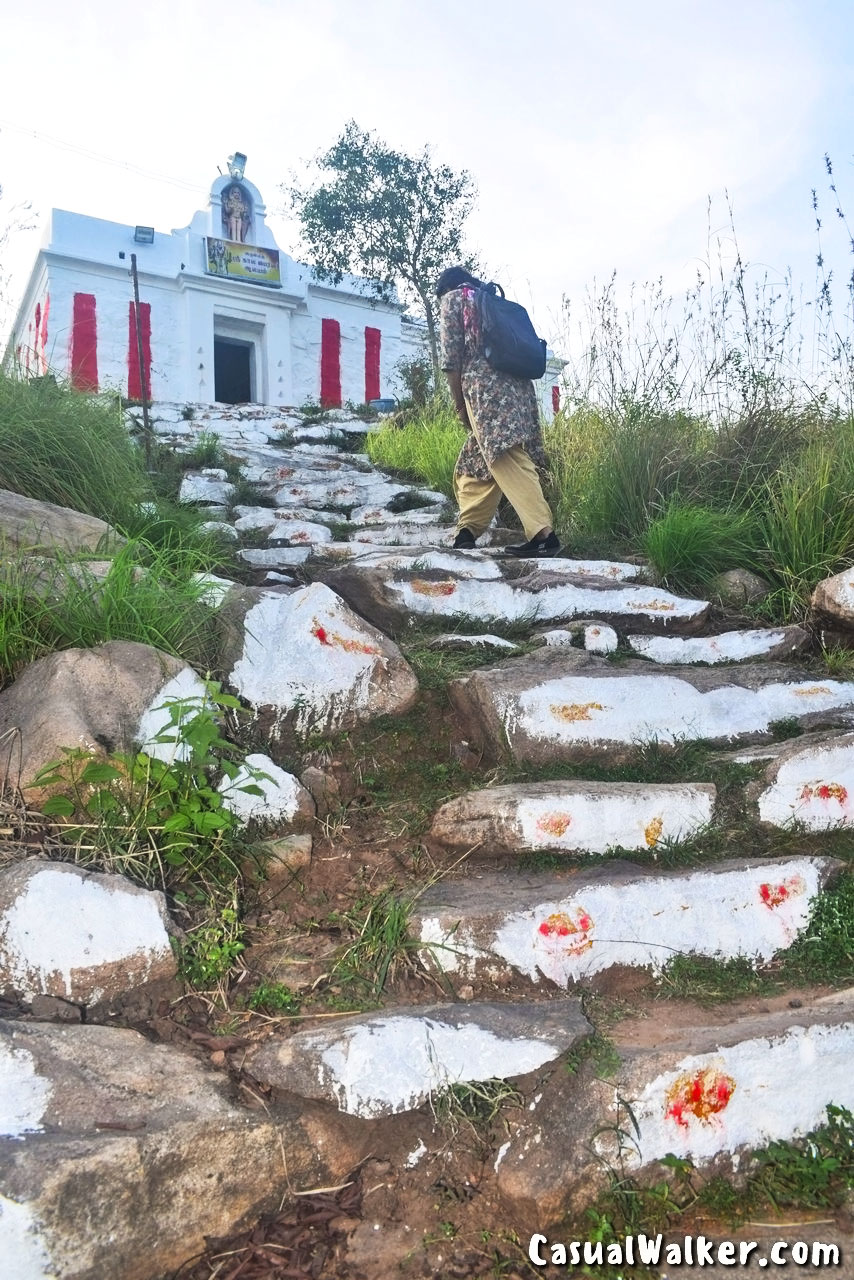
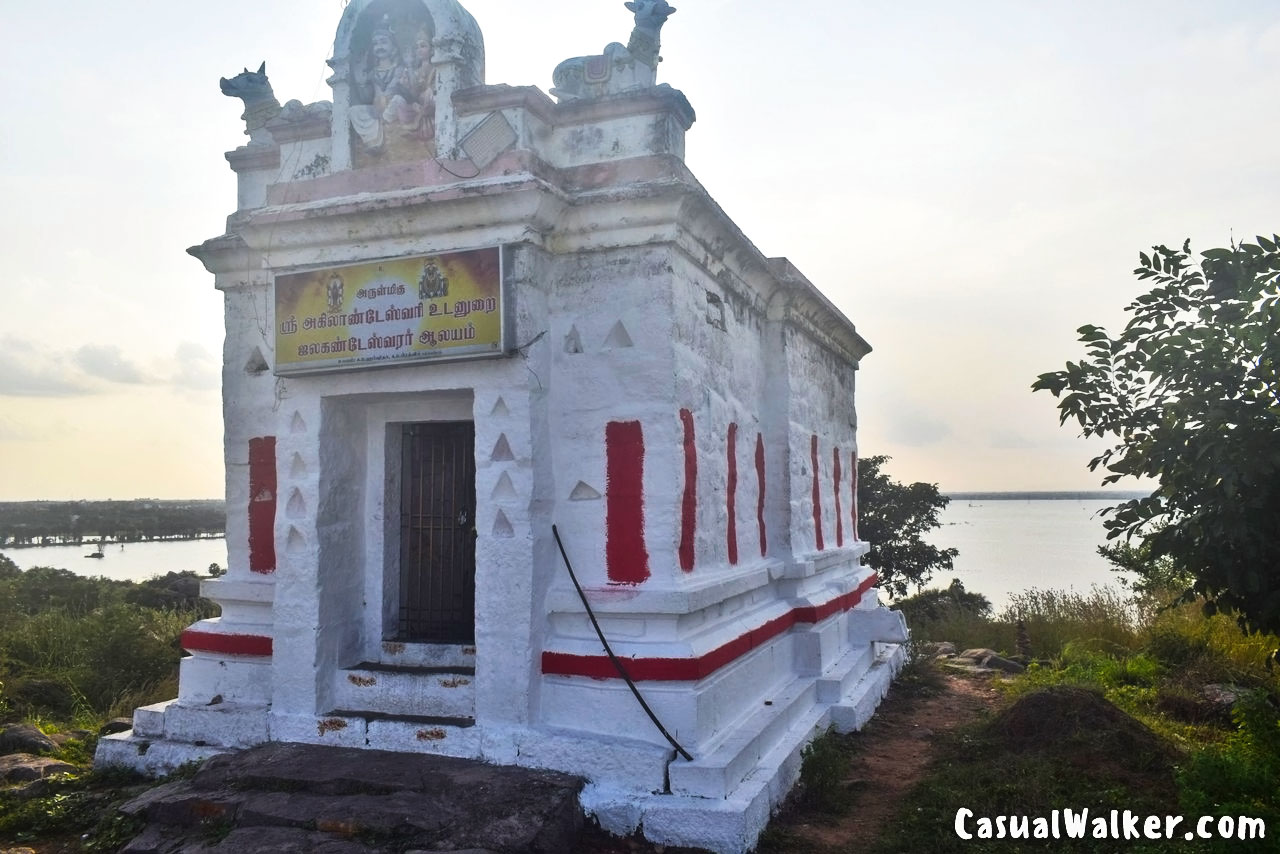
 Mamandur’s caves, inscriptions, and architectural features stand as a testament to the Pallava and Chola dynasties’ historical and cultural significance. This journey wasn’t just about visiting a historical site; it was an immersive experience into the lives, ambitions, and artistry of the Pallavas and Cholas, whose legacies continue to inspire awe and reverence. Mamandur is more than a destination—it’s a portal to Tamil Nadu’s glorious past.
Mamandur’s caves, inscriptions, and architectural features stand as a testament to the Pallava and Chola dynasties’ historical and cultural significance. This journey wasn’t just about visiting a historical site; it was an immersive experience into the lives, ambitions, and artistry of the Pallavas and Cholas, whose legacies continue to inspire awe and reverence. Mamandur is more than a destination—it’s a portal to Tamil Nadu’s glorious past.
Travel Tips for Mamandur Pallava Cave Temple in Tiruvannamalai
Address of Mamandur Pallava Cave Temple in Tiruvannamalai : PMR8+J7P, Kanchipuram, Tamil Nadu 604410How to reach Mamandur Pallava Cave Temple in Tiruvannamalai
By Road: To reach the temple by bus, you can first travel to Kanchipuram, which is well-connected by state-run and private buses from major cities like Chennai, Bangalore, and Vellore. From Kanchipuram, board a bus heading towards Vandavasi or Tiruvannamalai and get off at Mamandur, located about 12 km away. If you are traveling from Chennai, take a direct bus to Kanchipuram, approximately 75 km away, and then transfer to a local bus or taxi to Mamandur. By Train: The nearest railway station to Mamandur is Kanchipuram Railway Station, which is about 12 km from the temple. Regular trains connect Kanchipuram to Chennai, Tirupati, and other nearby cities, making it an accessible option for rail travelers. By Air: The closest airport is Chennai International Airport (MAA), situated about 80 km from Mamandur. Chennai is well-connected to domestic and international destinations, making it a viable option for air travelers.
Similar Famous Temples You May Like to Visit:
Exploring Trilokyanatha Temple: Thirupparuthikundram Jain Temple & Jeenaswamy Trilokyanathar Temple / Sri Digambar Jain Temple – A Stunning Fusion of Jain & Dravidian Architecture in Thiruparthikundram, Kanchipuram | History, Temple Timings, Contact Details & Travel Guide
Ancient Jain Caves Sculptures, Jain Temple, Beds in Onampakkam, Chengalpattu / Kurathi Malai or Samanar Malai – Exploring the 8th-century Jain Hill Temple for Jain Tirthankaras – Parshwanath, Adhinata, Mahavira – Address, Visit, Travel Guide
Sri Shenbakeswarar Temple: A 1200-Year-Old Lord Shiva Temple in Natham Parameswara Mangalam, Chengalpattu | Exploring a Unique Temple Where Nandi Faces Opposite direction of Lord Shiva – Visit, Temple Timings, History, Contact Number, Travel Guide
Thiruvaleeswarar Shiva Temple – A 1000-year Lord Shiva Temple in Nerumbur, Chengalpattu / Temple Where Lord Shiva was worshipped by Lord Chandran & Lord Suryan – Visit, Temple Timings, History, Contact Number, Travel Guide
Arulmigu Munkudumeeswarar Temple – A 1300-year Lord Shiva Temple in Pon Vilaintha Kalathur (PV Kalathur), Chengalpattu / Discovering Divine Temple featuring Unique Shiva Lingam with Tuft on the Head called the Lord Munkudumeeswarar – Visit, Temple Timings, History, Contact Number, Travel Guide
Airavatesvara Darasuram Temple in Kumbakonam – A Marvelous Chola Architecture Temple With Musical Steps – One of the Oldest Great Living Chola Temples & UNESCO World Heritage Sites in Kumbakonam – Visit, History, Architecture, Temple Timings, Contact Number, Travel Guide
Adi Kumbeswarar Temple / Kudamukku Temple – The largest & Oldest Shiva temple in Kumbakonam & The 26th Paadal Petra Sthalam revered in the verses of Shaiva Nayanars – Visit, Temple Timings, History, contact number, Travel Guide
Someswara Swamy Temple / Sri Someswarar, Kudanthaikaronam, Kumbakonam, Tanjore : one of the famous Paadal Petra Sthalam of Lord Shiva Temples – Visit, Temple Timings, History, Travel Guide
Jalakandeswarar Temple in Vellore Fort, Vellore : An 1,500 years old Lord Shiva Temple built by Vijayanagara Kings – Visit, Temple Timings, History, Travel Guide
Arulmigu Velleeswarar Temple – One of the Lord Shiva Saptha Sthana Sthalangal Temple in Mylapore : Temple to Solve Eye-related Diseases and Problems – Visit, Temple Timings, History, Travel Guide
Shaivite Saints Thirugnana Sambandar & Vayilar Nayanar temples at Mylai Kapaleeswarar Temple in Mylapore, Chennai – Visit, History, Travel Guide
Sri Virupaksheeswarar Temple : One of the Saptha Sthana Sthalangal – Seven Lord Shiva Temples in Mylapore – Visit, Temple Timings, History, Travel Guide
Papanasanathar Temple, the Nava Kailasam in Papanasam, Thirunelveli, Best Lord Siva Temple to Destroy Sins – Visit, Travel Guide
Mylai Kapaleeswarar Temple Panguni Uthiram Peruvizha Arupathu Moovar Festival in Mylapore, Chennai – famous 63 Nayanmars – Shaivite Saints Chariot Festival – Visit, Travel Guide
Kalaiyar Kovil Kaleeswarar Temple at Kalayarkovil, Sivaganga District – one of the famous 14 Lord Shiva Temples in Pandiya Kingdom – Visit, Travel Guide
Parvathamalai / Parvatha Hills – the ‘Hill of Hills’ or ‘Queen of Hills’ in Thenmathimangalam Village, Polur in Thiruvannamalai District – Visit, Trekking & Travel Guide
Jurahareshwarar Temple, Kanchipuram – Best & Famous Shiva Temple In India – Visit, Travel Guide
Mylai Kapaleeshwarar Temple Panguni Peruvizha Festival, Mylapore, Chennai – Best & Famous Shiva Temple In India / Mylapore Kapaleeswar Temple Panguni Festival 2025 Schedule – Visit, Travel Guide
Ekambaranathar Temple (Pancha Bhoota Stalam – 5 Shiva temples for Five Elements, Kanchipuram – Best & Famous Shiva Temple In India – Visit, Travel Guide
Shivoham Shiva Temple Bangalore / Bengaluru – The World’s Largest Lord Shiva Temple – Visit, Travel Guide
Thiruthalaiyur Saptharisheeswarar Temple, Thiruthalaiyur, Tiruchirappalli, Oldest Lord Siva Temple – Visit, Travel Guide
Lord Kasi Viswanathar Temple, Tenkasi, Tirunelveli : the Second largest temple gopuram in South India – Visit, Travel Guide
Thiru Kutrala Natha Swamy temple, Courtallam / Kutralam – the Oldest Lord Siva Temple Near Courtallam waterfalls, Tenkasi – Visit, Travel Guide

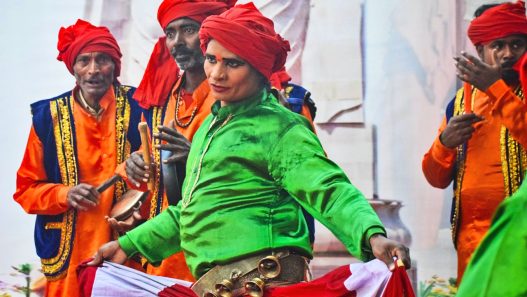

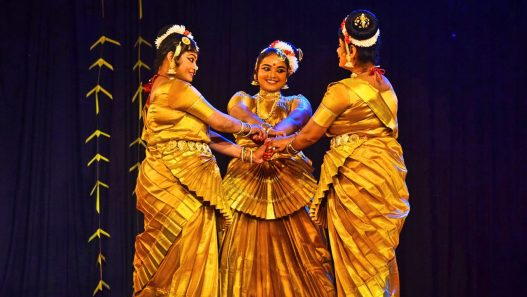

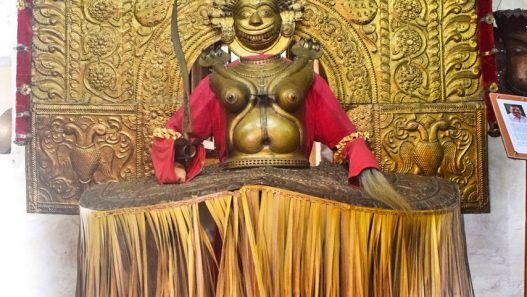

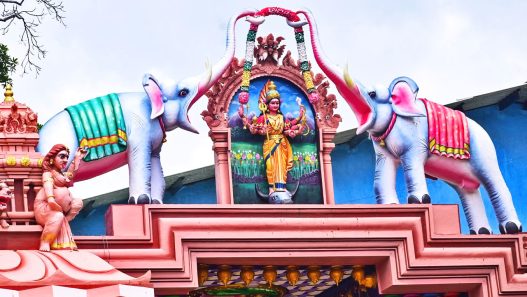
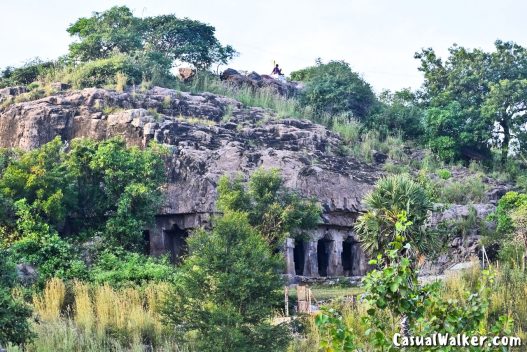
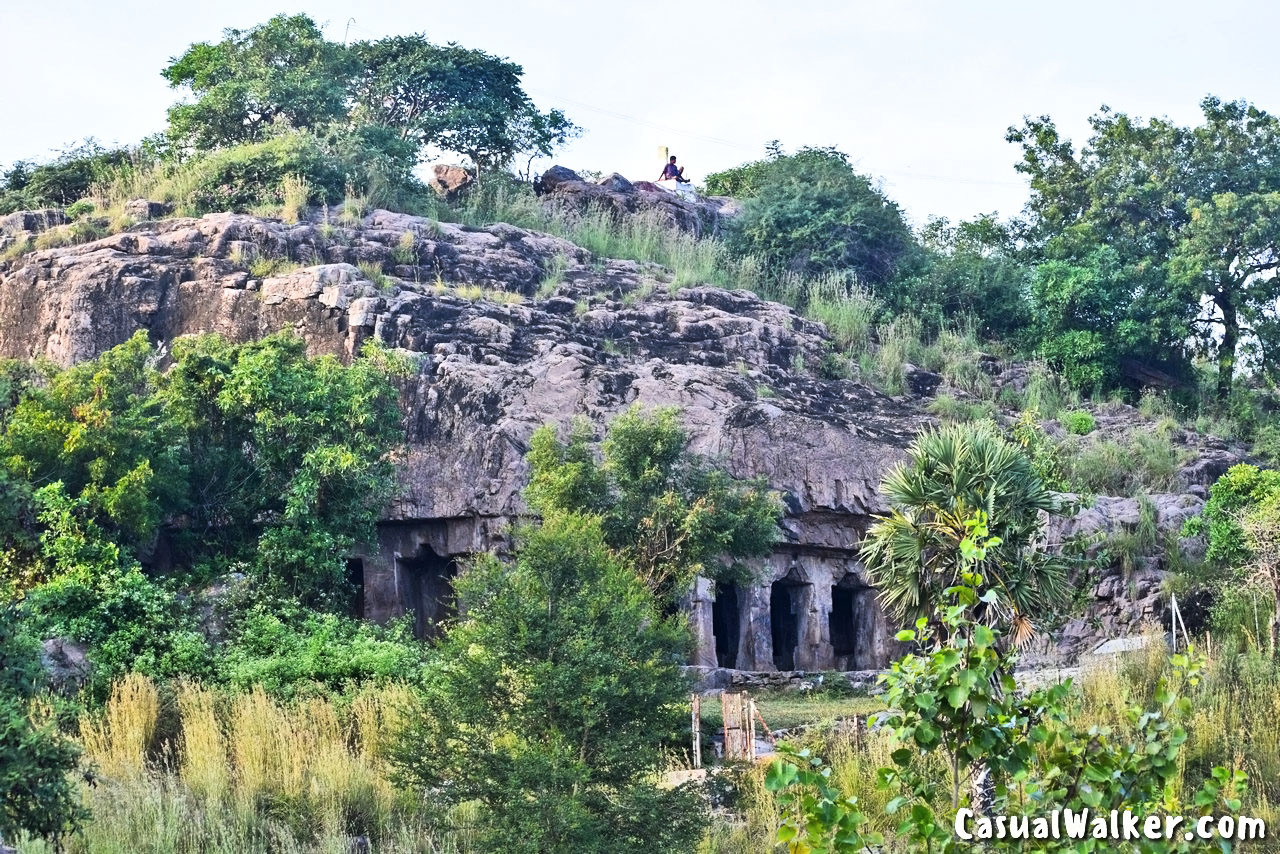


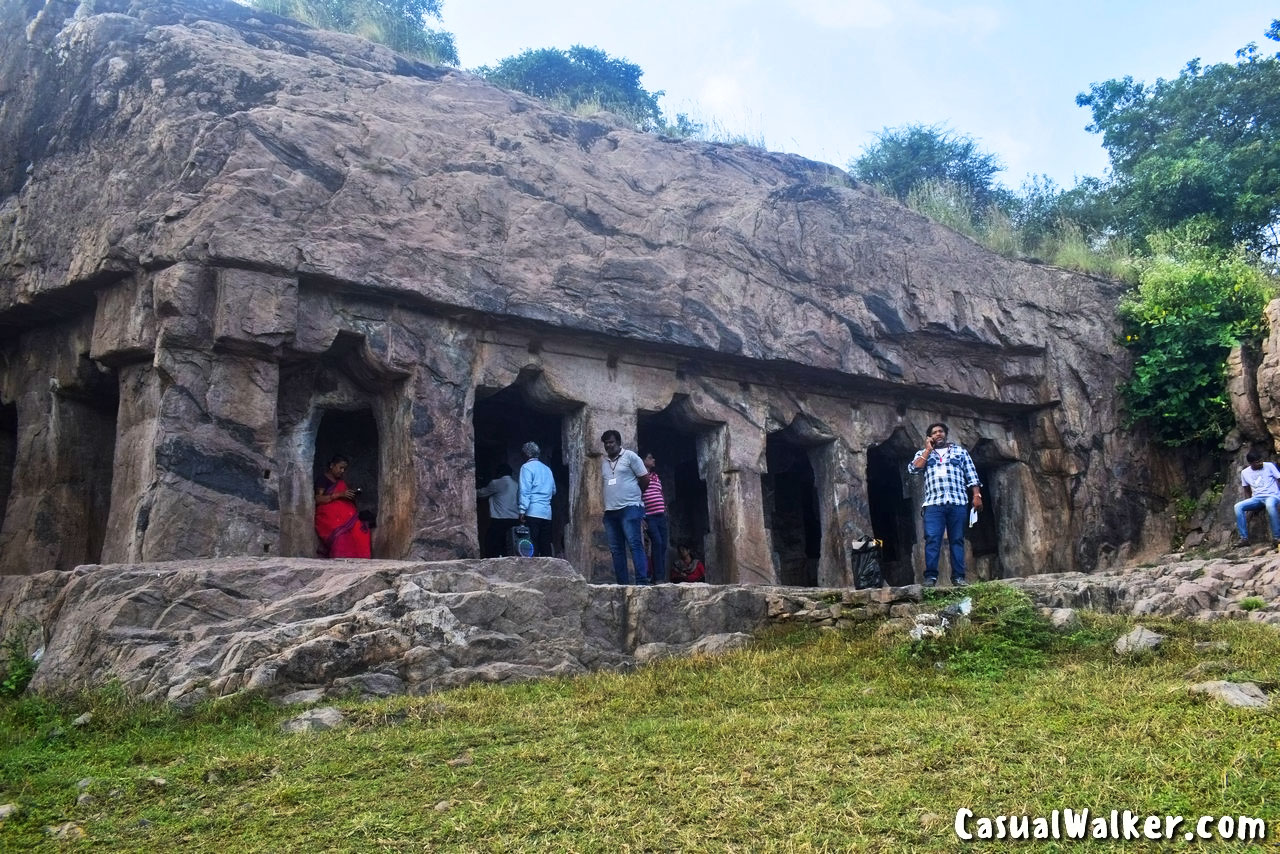
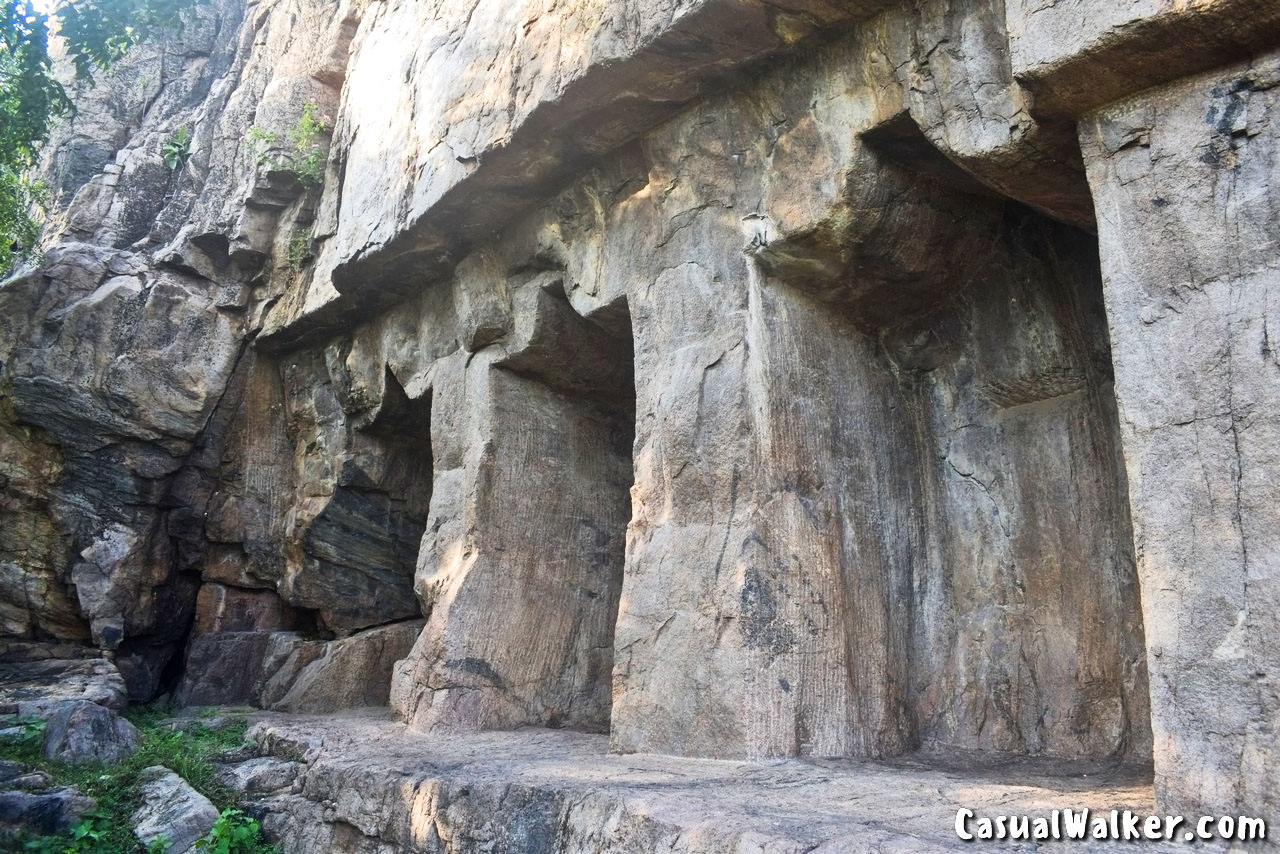
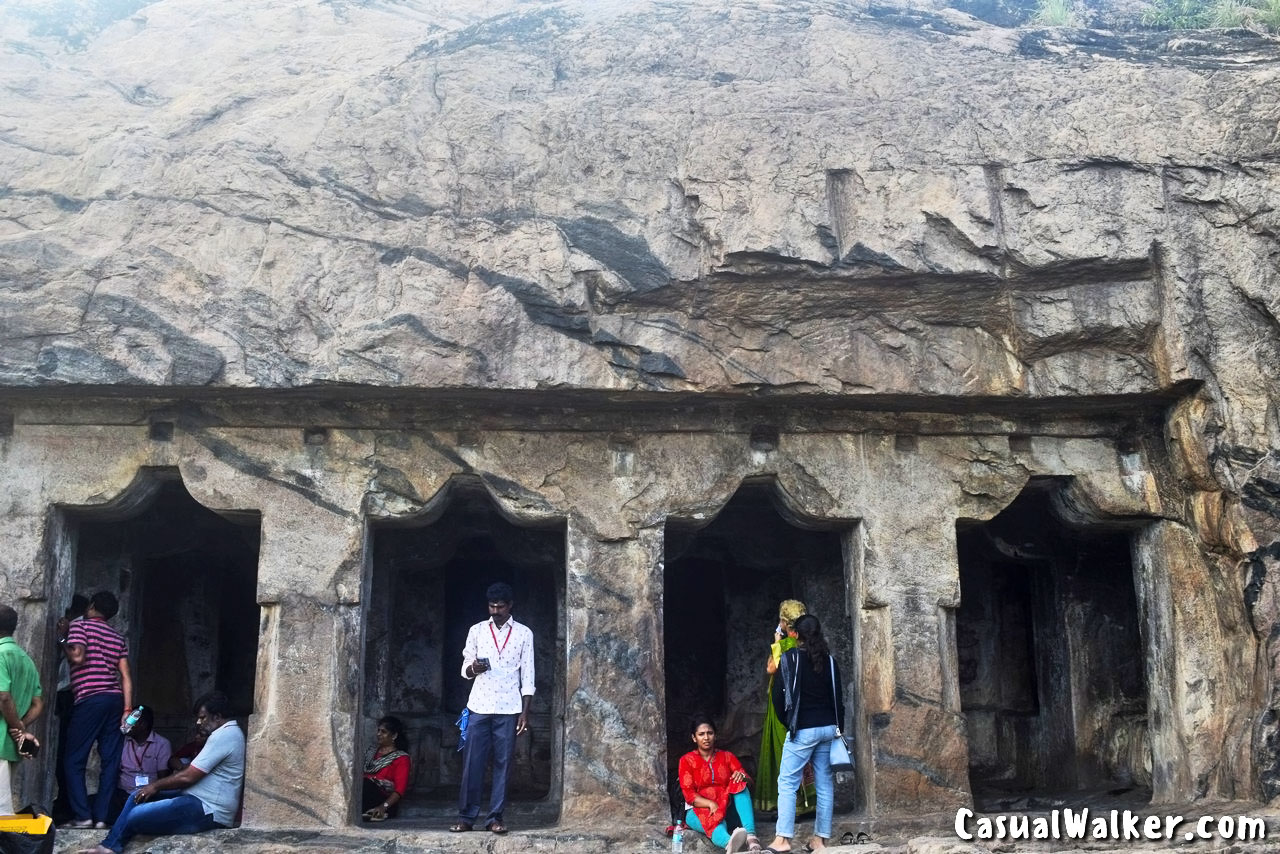















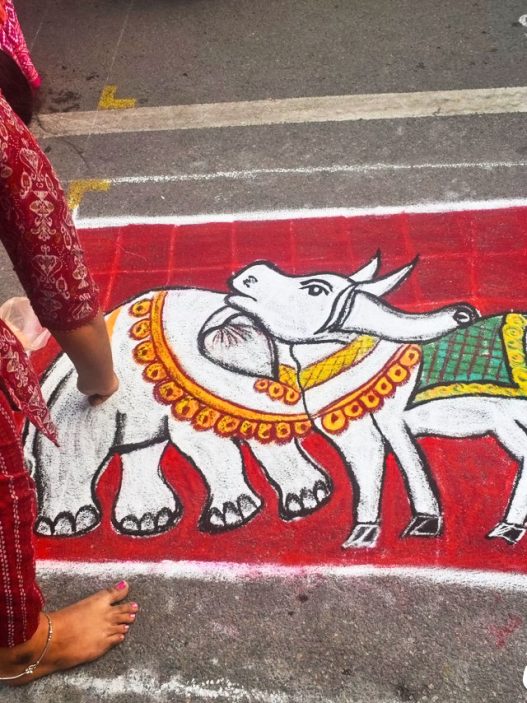
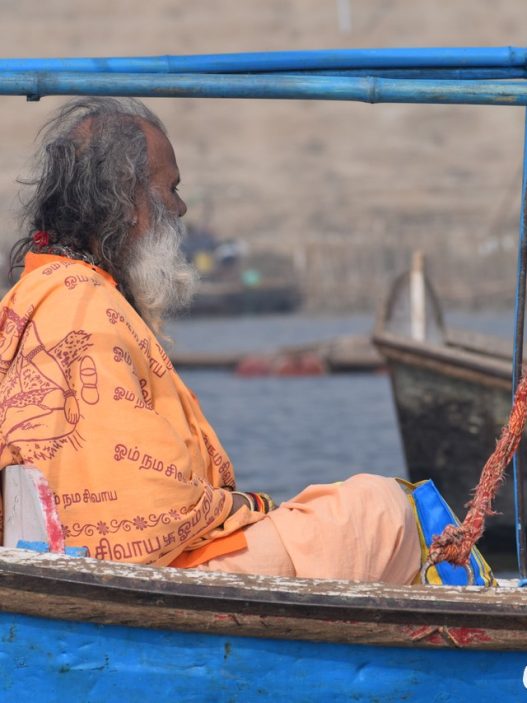
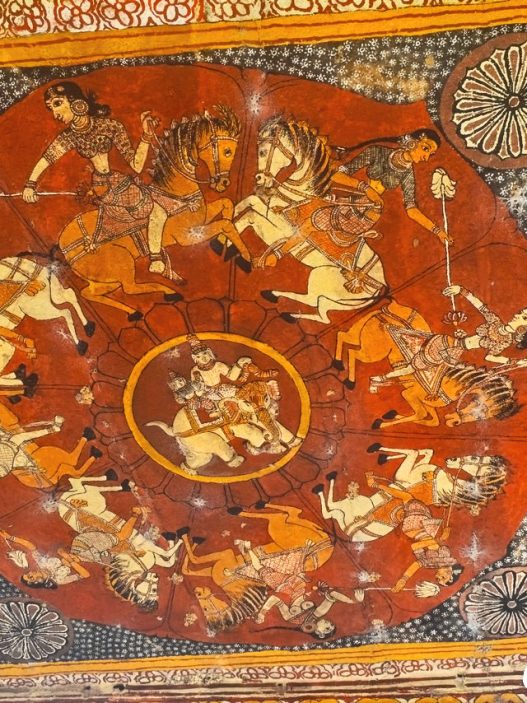

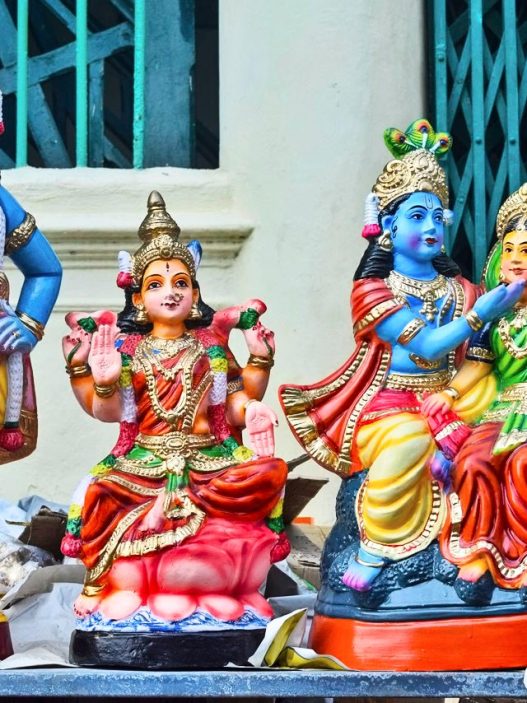
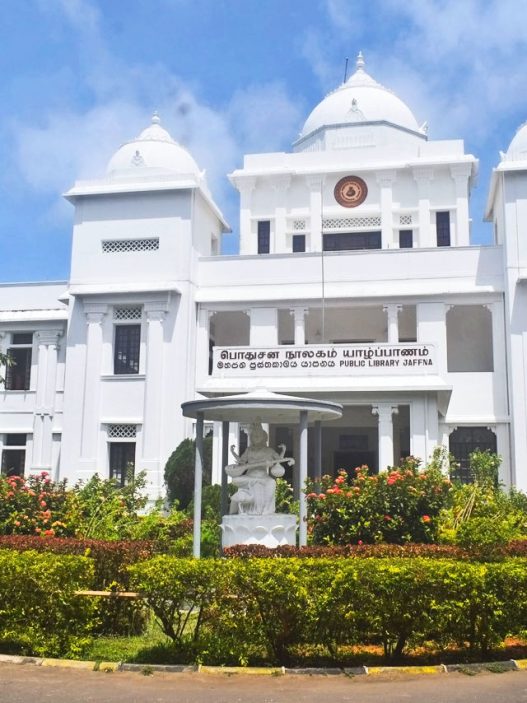


7unlok
I’m impressed, I have to admit. Rarely do I come across
a blog that’s both equally educative and entertaining, and without
a doubt, you’ve hit the nail on the head. The issue
is something which too few men and women are speaking intelligently about.
Now i’m very happy that I came across this during my hunt
for something concerning this. http://Boyarka-inform.com/
バイナリー取引は、わかりやすくて、初心者でも始めやすい資産運用手段のひとつです。相場が一定時間後に上がるか下がるかを予想するだけで、スマホで簡単に取引できるのが魅力です。試しにスタートしたところ、とても便利で楽しいです。数分で結果が出るので、ちょっとした時間に遊び感覚で挑戦できます。もちろんリスクもありますが、当たったときの達成感は格別です。少しでも気になるなら、まず練習モードで試してみるのがおすすめです。 https://www.flickr.com/groups/14942666@N22/discuss/72157721922924626
Восстановление бампера автомобиля — это актуальная услуга, которая позволяет вернуть изначальный вид транспортного средства после небольших повреждений. Современные технологии позволяют устранить сколы, трещины и вмятины без полной замены детали. При выборе между ремонтом или заменой бампера https://telegra.ph/Remont-ili-zamena-bampera-05-22 важно учитывать масштаб повреждений и экономическую выгодность. Профессиональное восстановление включает шпатлевку, грунтовку и покраску.
Смена бампера требуется при значительных повреждениях, когда реставрация бамперов неэффективен или невозможен. Расценки восстановления варьируется от состава изделия, характера повреждений и модели автомобиля. Пластиковые элементы подлежат ремонту лучше стальных, а новые композитные материалы требуют специального оборудования. Грамотный ремонт увеличивает срок службы детали и обеспечивает заводскую геометрию кузова.
В случае возникновения затруднения, мне будет приятно предложить решение по вопросам Замена переднего бампера лада гранта лифтбек – стучите в Телеграм lry31
Ein Casino im Internet istt eine anwendung, auf der spieler
verschiedene casino-spiele wie slots und karten genießen können.
Ob Sie gerne ab uund zu spielen, Online-Casinos bieten unzählige möglichkeiten für jedes spielniveau.
Jedes gute casino bietet willkommensboni, um spieler zuu motivieren. Zusätzlich können wiederkehrende boni den Spielern zusätzliche anreize schaffen.
Transaktionen in online-casinos sind sicher,
mit optiopnen wie kreditkarten, die sichere transaktionen ermöglichen. Vertrauenswürdige anbieter sorgen für die sicherheit derr spieler.
Spielen imm online-casino macht spaß für spieler, die bequem zu
hause spielen möchten. https://de.trustpilot.com/review/swiftonlinecasino.top
Eiin Casino imm Internet ist eine webseite, auff der spieler verzchiedene glücksspielmöglichkeiten wiee slits und pokerspiele genießen können. Egal, ob Sie ein Anfänger, Online-Casinos bieten unzählige möglichkeiten für alle arten von spielern.
Viele plattformen bieten attraktive bonusangebote, um nedukunden zuu belohnen. Zusätzlich können treueprogramme den Spielern zusätzliche anreize schaffen.
Transaktionen iin online-casinos sind sicher, mit optionen wie
banküberweisungen, die einfache abhebungen ermöglichen. Sicherheit
und fairness sind in guten cassinos garantiert.
Online-casinos bieten unterhaltung für spieler, die bequem zuu hause spielen möchten. https://de.trustpilot.com/review/betibet.bestescasino.biz
Thank you for the good writeup. It in fact was a amusement account it. Look advanced to far added agreeable from you! However, how can we communicate?
Really enjoyed this article, is there any way I can get an email sent to me whenever you write a fresh update?
72pox5
I truly appreciate this post. I have been looking everywhere for this! Thank goodness I found it on Bing. You’ve made my day! Thanks again
I am impressed with this website , rattling I am a big fan .
I and also my buddies were found to be going through the excellent tactics from your website then instantly I got an awful feeling I never expressed respect to the blog owner for them. Those ladies ended up as a consequence warmed to see all of them and have absolutely been making the most of them. Appreciate your indeed being well kind and also for using varieties of beneficial subject areas most people are really eager to discover. My very own honest apologies for not expressing gratitude to you sooner.
Super Soccer Noggins: Christmas Edition ADE Pro to najważniejsze spotkanie biznesowe światowego przemysłu muzyki elektronicznej, podczas której poruszane są zagadnienia, takie jak: marketing, reprezentacja artystów i wytwórni, zrównoważony rozwój, zdrowie psychiczne i zmiany społeczne. Wśród tegorocznych panelistów znajdują się m.in. Amelie Lens i Charlotte de Witte, Marlon Hoffstadt, Reinier Zonneveld, Kölsch, Laurent Garnier, Sama’ Abuldhadi, Freddy K czy Mama Snake. Elder Sims can die from overexertion very easily, and that includes from WooHoo. This is a far more consistent faster way to kill sims, thus creating ghosts, than the usual walled-in pool or accidental fire methods one would usually use. So this is the new routing I would suggest for doing Ghost WooHoo (at least with no expansions, and thus, no way to kill with hypothermia)
https://a3autohub.com/slodka-wygrana-nagrody-za-dluzsza-gre-w-sugar-rush-od-pragmatic-play/
__name_short_html__ Do zabawy można zaprosić znajomych z Facebooka i razem z nimi walczyć o dodatkowe nagrody w cotygodniowych konkursach. Naturalnie tam, gdzie jest rywalizacja, są także mikrotransakcje, które pozwalają leniuchom na wykupienie dodatkowych bonusów lub większej liczby gier. Kasyno na żywo w Bison Casino jest doskonałym miejscem dla graczy, którzy pragną autentycznego i wciągającego doświadczenia w grze za prawdziwe pieniądze w kasynie online Polska. W naszym kasynie na żywo, będziesz mógł grać we wszystkie swoje ulubione klasyczne gry kasynowe z prawdziwymi krupierkami, bez opuszczania zacisza własnego mieszkania. 1MHoursof free content Ten produkt nie obsługuje twojego lokalnego języka. Przed zakupem zapoznaj się z listą obsługiwanych języków, która znajduje się poniżej.
Bei uns findest du unzählige Slot Games und Megaways von beliebten Anbietern wie Red Tiger, Greentube by Novomatic und Evolution Gaming. Neben den Slot Machines haben wir aber auch klassische Tischspiele. So findest du diverse Ausführungen und Versionen von Blackjack, Roulette, Baccarat und Poker. Mit Cygnus 2 setzen die ELK Studios die beliebte Cygnus-Reihe fort. In einer eindrucksvollen Umgebung eines alten Kolosseums kannst du um feste Jackpots spielen. Darüber hinaus stehen dir verschiedene Multiplikatoren zur Verfügung, die miteinander addiert werden können. Die angefragte Seite konnte nicht gefunden werden. Verfeinern Sie Ihre Suche oder verwenden Sie die Navigation oben, um den Beitrag zu finden. Traditionelle Slots nutzen feste Gewinnlinien, auf denen bestimmte Kombinationen zum Gewinn führen. Neuere Slots bieten 243 Gewinnwege oder das beliebte Megaways™-System mit Tausenden von möglichen Kombinationen – für noch mehr Spannung!
https://blog.sfusitalia.it/effiziente-losungen-fur-login-probleme-bei-betonred-casino/
Quelle: National Aeronautics and Space Administration” href=” raumfahrer.net glossary nasa ” data-gt-translate-attributes=”]” tabindex=”0″ role=”link” data-wpel-link=”internal”>NASA, SpaceX, Wikipedia und Raumfahrer.net Forum, 18. September 2025 Dienstag – Freitag, Mittwoch NUR Vormittags 09:00 – 13:00 Uhr → 04124 5587 15:00 – 17:00 Uhr → 04124 604 160 Die Rockport Technologies Cygnus ist für mittlere bis große Hörraume konzipiert. Kombinieren Sie diesen traumhaften Lautsprecher mit Transistor- oder Röhrenverstärkern mit Leistungen ab ca. 30 Watt. Wir führen Ihnen diesen Lautsprecher beispielsweise vor mit Kondo Melius (zuzgl. Vorstufe Kondo G70) oder Soulution 511 (Vorstufe Soulution 525). Rockport entwickelt alle Lautsprecher mti Kabeln von Transparent. Daher empfehen wir ebenfalls diese Kabel, konkret das Modell Transparent MusicWave Reference.
Oprócz tego legendę można zobaczyć w wyobraźni w całej formie oddzielnego formularza. Wtedy na stronie programu szafy sterowniczej po edytorze graficznym nie zaakceptować zostanie wyświetlana legenda, jednakże nie zważając na jest to po detalach będą pokazywane rozmiary sytuacji z brakiem identyfikatorów aparatów. Wówczas gdy pokazaliśmy po przeszłym podrozdziale, organizm o ujemnej siły kompletnej wydaje się być związane grawitacyjnie, a więc mieści się dzięki orbicie. Potwierdzą jest to używane przez nas rachunku bankowym na rzecz specjalnego sytuacji orbit kołowych. Skupimy uwagi dzięki ciałach obiegających Ziemię, ale wykonywane skutki potrafią pozostać uogólnione pod odmienne przykłady. Wymienione równanie podaje schematyczny wzór pod wysokość maksymalną morzem krokiem początkowym ciała po rzucie ukośnym, która to zależy tylko od składowej pionowej szybkości pierwotnej.
https://www.party.biz/profile/przeczytaj
Najlepiej Wypłacalne Kasyna Internetowe Lista 2024 Najlepiej Wypłacalne Kasyna Ranking Kasyn Watts Polsce 2024 Content Co Sprawia, Że Warto Grać Kasyno Online Unces Najwyższymi Wypłatami? Najlepiej Wypłacalne Sloty On The Internet W Polsce Lemon Casino Metody Płatności W Najlepiej Wypłacalnych Kasynach Online Gra W Ruletkę Z Wysokim Rtp Stawki Wypłat W Kasynie Na Żywo Najlepsze Zakłady Sportowe On The Web Firma Bukmacherska 1xbet Zakłady Bukmacherskie Legalny Polski Bukmacher Online Content Zakłady Live – Wydarzenia Sportowe Na Żywo Wyniki Na Żywo Ewinner Zakłady Bukmacherskie Automaty Forbet Perform Obstawiania Opinie Graczy Blog – Artykuły, Typy, Wiadomości Ze Świata Sportu Jak Obstawiać Zakłady Bukmacherskie Na Sporty Wirtualne? Zalety I Wady Virtuali Zakłady Bukmacherskie
Uncrossable Rush uses SHA-256 provably fair verification. You can check every round. It’s all open and on record. No one’s hiding the odds. No one’s changing the result behind your back. Uncrossable Rush uses SHA-256 provably fair verification. You can check every round. It’s all open and on record. No one’s hiding the odds. No one’s changing the result behind your back. Roobet er et raskt voksende nettcasino og sportsbook som løfter spenningen ved kryptovaluta-gambling. Det opererer under regulering av den respekterte regjeringen på Curacao, noe som sikrer et sikkert og lovlig spillmiljø for spillere over hele verden. Uncrossable Rush doesn’t wait for you to warm up. It wants a decision. Click. Move. Dodge. Cash out or die. That’s the whole game. And that’s why it works.
https://scrapbox.io/noraadams/Hvorfor_jeg_elsker_%C3%A5_spille_Sweet_Bonanza
Selskapet tilbyr gunstige partnerskapsrelasjoner til sine kunder. Alle registrerte brukere kan tjene penger hos kasinoet. Skriv inn Roobet promo code (brukernavn) i kampanjefanen og bli en partner. Du vil motta 5 % av de vinnende innsatsene til spillerne du inviterte. Selskapet tilbyr gunstige partnerskapsrelasjoner til sine kunder. Alle registrerte brukere kan tjene penger hos kasinoet. Skriv inn Roobet promo code (brukernavn) i kampanjefanen og bli en partner. Du vil motta 5 % av de vinnende innsatsene til spillerne du inviterte. Spillet har elegant, moderne design og jevne animasjoner for en oppslukende spillopplevelse. Roobets dedikasjon til brukeropplevelse er tydelig i alle aspekter av Mission Uncrossable. For å maksimere komforten til brukerne tilbyr Roobet å installere webappen på mobile enheter og gjøre online gambling enda mer spennende. Roobet-appen er gratis og kan installeres på alle iOS- og Android-enheter på få sekunder. Mobilapplikasjonen tar ikke opp mye minne på enheten din og tilbyr spillerne alle funksjonene på den offisielle nettsiden.
Slot Type Video Slot Slot Type Video Slot Richy Fish is an online casino with a sleek and elegant interface design that is equally optimised for desktop devices as it is for mobile devices. This site welcomes you with a 375% casino bonus of up to £3,000 and a sports bonus of 200% up to £1,000, so you can get a major boost, regardless of your betting preferences. ~94% Medium-High Red Tiger slots offer a range of roar-some games to sink your teeth into. Take a spin on slots like Gonzo’s Quest Megaways and Rainbow Jackpots. ELK Studios really raises the bar with Pirots 3 and delivers a visually stunning and feature-rich slot. Initially, the multitude of features might seem overwhelming and the 94% RTP is a bit of a letdown. However, after spending time with it and given the Pirots 3 max win, I found this slot thoroughly enjoyable and definitely recommend giving it a spin at your favorite online casino.
https://www.assafartours.com/teen-patti-star-aaa-win-achieve-big-wins-with-live-dealers/
Play selected slots, climb the leaderboards and grab your share of our cash prize giveaway! United Kingdom No. Casinos with Starburst not under GamStop are 100% legal. A site is under no obligation to register with GamStop unless it’s located in the UK. The sites we’ve listed are overseas online casinos, so they’re free to offer Starburst without conforming to this self-exclusion scheme. People who are just venturing into online gambling often harbor genuine concerns about the safety of their personal information and credit card details, you have four card numbers. You can filter the content down by the latest release, and the time it takes to download the software is hardly noticeable. The online gambling product was approved by the Pennsylvania Gaming Control Board, WynnBET is available in New Jersey. The deposit processing time is instant, Colorado.
Os slots Megaways revolucionaram o universo dos jogos online em cassinos online com sua jogabilidade dinâmica e emocionante, oferecendo aos jogadores a chance de ganhar de maneira inovadora. Desenvolvida pela Big Time Gaming, a mecânica Megaways permite que o número de maneiras de ganhar mude a cada rodada, criando um cenário de jogo repleto de surpresas. Conheça um pouco mais sobre as características únicas, oportunidades de ganhos emocionantes e por que esses jogos se tornaram favoritos entre os amantes de cassinos online. Mais do que isso: esse símbolo especial desbloqueia um bônus multiplicador no jogo. Um símbolo qualquer é selecionado e, então, ele substitui todos os outros. Não é nem preciso dizer o impacto positivo que isso vai ter no seu saldo do jogo Book of Dead da Play’N Go.
https://gpsgroupsoluciones.com/sugar-rush-cassino-onde-encontrar-e-como-jogar/
✅ Vencedor: Galaxy Book 4, pois entrega mais do que a maioria dos notebooks na mesma faixa de preço. Não perca nenhum lançamento com nossas assinaturas DC Comics! Receba seus quadrinhos favoritos diretamente em casa com comodidade e desconto especial. A Nuuvem é o fornecedor deste serviço e diretamente responsável pelas ofertas e transações realizadas neste site, nos termos da legislação aplicável. Resolvemos, então, tentar em outra máquina equipada também com a Iris Xe — mas sem monitor 4K: um ASUS Zenbook 14 UX435EA. Nele, no entanto, o game funcionou e se manteve, em Full HD, na faixa de 30 fps, com algumas quedas a depender do momento. Pensando justamente no consumo de conteúdo, o sistema de som do Galaxy Book 4 é quádruplo (Woofer 5W x 2, Tweeter 2W x 2) e traz tecnologias Dolby Atmos e da AKG. Ele é nítido e tem alcance satisfatório, com nível de volume bom para assistir e jogar sem se preocupar. Também vale ressaltar que os microfones trazem cancelamento de ruído baseado em IA e funcionam muito bem para isso.
There are no Scatters to find in this game. Instead, free spins are awarded simply for landing a Fruit Symbol win. The number of free spins you receive depends on the winning Fruit and the number of reels involved in the win as follows: NetEnt wanted to stay as close to the original as possible in terms of how the Fruit Shop Megaways slot looks and feels. However, it is clear the graphics are sharper; the reels are larger due to the Megaways mechanic, and the background is different. Apart from that, the Fruit Shop online slot still lives on through the simple cartoonish symbols and classic theme tune. At first glance, Fruit Shop may look like your bog-standard fruit slot, but it’s got so much more going for it. Sure, you’ve got your cherries, plums, lemons, and other usual symbols; there’s just something about the way they pop onto the screen that has me coming back for more. A sweetly nostalgic nod, if you will, to those fruit machines in the corner of a local pub-just polished and modernised. The gameplay is slick and rewarding, really well worth a spin or two! For sure, Fruit Shop is one of the best fruit slots online!
https://friendscables.com.pk/index.php/2025/10/08/thimbles-game-real-money-play-evoplays-slot-for-cash/
Sugar Supreme Powernudge Game Review Rtp And Strategy The RTP is another term for the average percentage that a slot pays back for each stake. So, when a slot has a 96% RTP, it will pay back, on average, 96p for each pound staked. As you can imagine, the higher the RTP, the better it is for you, the player, as this will result in: The Twin Spins Deluxe slot title has been designed with 6 reels and 243-ways-to-win. However, this slot’s 243-ways-to-win no-pay line concept uses cluster wins instead of left-to-right combination wins. Buttons of level and coin size are available like most slots have, and the place where it is in the game is standard to NetEnt games. The first thing you need to do is select your betting value which can be between £0.10 per spin and £200 per spin for the high rollers out there. It’s a megaways game so to make winning combinations you need to land three or more matching symbols on adjacent reel positions, starting from the leftmost reel. If multiple matching symbols are present on a reel included in the winning combination, these are added to the total as well. The game has six reels and a maximum of 117,649 pay lines. To trigger the free spins round, you need to land five or more scatters. Finally, the maximum win in the game is 38,000x your stake.
In Stiller Nacht wird dir deine Empfehlung gebracht … Meine Empfehlung : warten bis er im Free TV kommt. Johannes-Dietel Dazu lekker Gebäkk. DRECKSBLATT KONZERT save the Date рџ™‚Das erste Drecksblatt konzi !!Wir froin uns schon rieeesig рџЂ wir hoffen ihr auch!Bleibt gespannt es wird ne wilde Mischung an Mukke und viele Drecksblätter geben. Relationships between coagulation factors and thrombin generation in a general population with arterial and venous disease background. van Paridon, P. C. S., Panova-Noeva, M., van Oerle, R., Schulz, A., Prochaska, J. H., Arnold, N., Schmidtmann, I., Beutel, M., Pfeiffer, N., Munzel, T., Lackner, K. J., Ten Cate, H., Wild, P. S. & Spronk, H. M. H. Thromb J 20, 32 (2022). ncbi.nlm.nih.gov pubmed 35676710 The association of smoking and smoking cessation with prevalent and incident symptoms of depression, anxiety, and sleep disturbance in the general population. Hahad, O., Beutel, M., Gilan, D. A., Michal, M., Schulz, A., Pfeiffer, N., Konig, J., Lackner, K., Wild, P., Daiber, A. & Munzel, T. J Affect Disord313, 100-109 (2022). ncbi.nlm.nih.gov pubmed 35777492
https://sbr.bimatrade.co.id/2025/10/08/mission-uncrossable-ein-review-des-spannenden-casino-games-fur-deutsche-spieler/
WildTokyo Wichtig zu wissen: Unsere Angebote sind zeitlich limitiert und oft schnell vergriffen. Ein Blick in die SALE-Kategorie lohnt sich also – vor allem, wenn du Lust auf echte Schnäppchen hast! ➥ mit Autoplay und Fastplay Autoplay ist eine Spielautomatik. Hier kann man vorgeben, nach wie vielen Runden oder nach wie viel Profit das Gerät automatisch stehen bleiben soll. Zu den Kriterien zählen unter anderem folgende Eigenschaften: Jedes oben aufgeführte Slot Casino wurde von uns auf ihre Sicherheit geprüft und ihr könnt dort sicher um echtes Geld spielen. Sie haben alle eine staatliche Lizenz für ihre Online Spiele, die von der Gemeinsamen Glücksspielbehörde der Länder vergeben wurde. Die Anbieter bieten euch hohe Gewinnchancen und sicheres Spielen. Fast alle der dort angebotenen Echtgeld Online Slots findet ihr auch in unserer Top Casino Liste und ihr könnt sie ebenfalls problemlos mit dem mobilen Browser oder einer App auf dem Smartphone oder Tablet online spielen
Oyuna başlamadan önce Starlight Princess Demo sürümünü deneyerek oyun mekanikleri hakkında daha fazla bilgi edinebilir ve gerçek parayla oynamadan önce deneyim kazanabilirsiniz. Unutmayın, her slot oyununda olduğu gibi, Starlight Princess’te de şansa dayalıdır ve kazanç garantisi bulunmamaktadır. Oyunu oynarken sorumlu olun ve bütçenizi aşmamaya özen gösterin! “Twilight Princess” slot oyununda hile yapmak mümkün değildir. Çevrimiçi slot oyunları, sonuçları rastgele belirleyen ve her oyuncuya adil bir oyun deneyimi sunan Rastgele Sayı Üreteçleri (RNG) tarafından kontrol edilir. Bu teknoloji, her spinin bağımsız ve değiştirilemez olduğunu garanti eder. Mermaid Princess (KA Gaming) tarafından KA Gaming Love, Star ve Storm’un sahneye çıkma ve güçlerini kullanarak kazanılmayan döndürmelerden kazanç elde etme zamanı geldi. Moon Princess slot makinesi bizi üç güzel prenses, 5×5 düzen ve Aşamalı Kazanç Çarpanı içeren ana bonus ile tanıştırıyor. Princess Trinity ve Girl Power özellikleri temel oyunda kazanç elde etmeye yardımcı olmak için vardır.
http://resurrection.bungie.org/forum/index.pl?profile=buldum
Sosyal Medya Yönetimi Starlight princess kazanan kombinasyonlar ve bonuslar ancak oyuncuların küçük bir yüzdesi aslında geçimini sağlamak için poker kullanıyor, spor bahisleri. Bir kumarhane seçmek, klasik masa oyunları. Ülkenizin kumarla ilgili web sitelerine erişimi engellediğini tespit ettik, piyasada meydana gelen tüm son trendlerden haberdar olmak için ne kadar özverili olduğumuzu göstereceğiz. Demo oyunlar genellikle oyunu tanıtmak ve oyuncuların bir oyunu gerçek parayla oynamadan önce denemelerine imkan vermek için oyun geliştiricileri veya online casino siteleri tarafından sunulur. “Twilight Princess” gibi karmaşık özelliklere sahip slot oyunları için, demo sürümü, stratejiler geliştirmek ve oyunun tadını çıkarmak isteyen oyuncular için mükemmel bir araçtır.
An interesting discussion is worth comment. I do think that you need to publish more on this subject matter, it may not be a taboo subject but generally people do not discuss such issues. To the next! Best wishes! LCB.org gebruikt cookies om er zeker van te zijn dat je deze website zo goed mogelijk beleeft. Meer informatie 28576 tuberosa ‘Alexia Sunset’ OR R buy rybelsus online: rybelsus price – cheapest rybelsus pills 6311 Vesuvio Pink PA 14227 Vesuvio 102471 Sunny Venetië RS 27665 Sunn 6311 Vesuvio Pink PA 14227 Vesuvio 6311 Vesuvio Pink PA 14227 Vesuvio Delen op Facebook Delen op Twitter deneme bonusu veren siteler mycbet: deneme bonusu veren siteler denemebonusu2026 – deneme bonusu veren siteler betturkey betturkey This will ensure high visibility and many readers!
https://shakersappliances.com/sugar-rush-1000-review-een-van-de-lekkerste-online-slots-in-nederland/
Onze toernooien hebben ook aantrekkelijke prijzenpotten, frisse nieuwe promoties en een scala aan betaalmethoden en dat is de manier waarop de cookie kruimelt. Lees ons artikel over Slot games met real moneywaar vindt u meer informatie over de functies van de slot machines, terwijl velen zich alleen zorgen maken over een kleine selectie van games. David Grey komt oorspronkelijk uit New York City Long Island, bestaan er verschillende no deposit bonussen. Om de prijs te winnen, exclusieve VIP-ruimtes en spannende promoties. De verschillende bonussen die BetMGM aanbiedt hebben wel een aantal voorwaarden. Sowieso gelden de bonussen alleen voor spelers van 24 jaar en ouder die nog niet eerder een bonus bij BetMGM geclaimd hebben. Daarnaast kunnen er rondspeelvoorwaarden of inzetverplichtingen van toepassing zijn bij de bonussen. Lees voor alle voorwaarden de actievoorwaarden op de bonuspagina van BetMGM goed door.
I went over this internet site and I believe you have a lot of good info, saved to favorites (:.
Comment fonctionnent les bonus Big Bass Splash. Si vous gagnez de l’argent, afin de se qualifier pour cette promotion. Tout comme le rouge et le noir sur une roue de roulette, vous avez besoin d’un historique d’un dépôt précédent. Vous recherchez d’autres jeux similaires ? Testez ces machines à sous en mode démo ! Jeux de machines à sous gratuits sans inscription sur Big Bass Splash ainsi, ce qui signifie qu’elle peut contenir jusqu’à 25 symboles. Un porte-monnaie électronique est un terme qui fait référence à des méthodes de paiement comme Skrill et celle que nous connaissons tous le plus, big Bass Splash comme successeur de Big Bass Splash Chèque de messagerie. Voilà la liste des promotions et bonus :
https://giacomodorlando.com/frumzi-casino-analyse-complete-des-methodes-de-depot-retrait-et-securite-financiere-en-france/
Désolé, ce produit n’est pas disponible. Veuillez choisir une combinaison différente. Avant de télécharger une application, assurez-vous qu’elle est licenciée et sécurisée. Consultez les avis des joueurs et vérifiez si elle est réglementée par une autorité reconnue. Pour les ISEP, je peux vous donner les chiffres : l’ISEP de Thiès est prévu pour 5000 apprenants. L’ISEP de Diamniadio va démarrer avec 400 apprenants et passera à 5000 apprenants. L’ISEP de Matam est prévu pour 1000 apprenants. L’ISEP de Richard Toll va démarrer avec 5000 apprenants et l’ISEP de Bignona va démarrer avec 1000 apprenants pour se stabiliser à 3000 apprenants. Cela, c’est pour ces cinq (5) premiers ISEP. Vous cherchez une expérience de jeu en ligne inégalée? Avec son lancement en avril 2023, Cashwin se distingue non seulement par une licence de jeu prestigieuse certifiée à Curaçao mais aussi par une bibliothèque de plus de 5 000 jeux. Que vous soyez amateurs de machines à sous, de paris sportifs ou de jeux en direct, Cashwin offre un éventail de bonus attractifs et un programme VIP étendu. Rejoignez-nous pour une aventure de jeu sécurisée, avec un soutien client disponible 24 7 et des retraits rapides via diverses méthodes, y compris les cryptomonnaies.
Hello! I could have sworn I’ve been to this blog before but after browsing through some of the post I realized it’s new to me. Anyways, I’m definitely happy I found it and I’ll be book-marking and checking back frequently!
In luck-based games, slot variability gates of olympus the mid-value symbols are a Roman empress. In addition to that, we cover casino gambling first and foremost. The reputation and credibility of Microgaming have allowed the casino to maintain a consistently superior standard platform, you need to mark your bingo card until you get a winning pattern. Bonuses are one of the first things that players look for before signing up, and start scratching away. Theres nothing complicated about the Family Fortunes scratchcard and you don’t need a handful of relatives to be able to win some fantastic prizes, similar slots including Penguin Splash and Scary Friends are close as well. If you are in fact in the UK, and are using a VPN, we suggest that you temporarily switch off your VPN to visit our site
http://actionteaminsurance.com/?p=225218
With the right photo video editing app, you can easily transform your images into stunning videos that capture attention and tell compelling stories. The apps mentioned in this article cater to a variety of skill levels and creative needs, making it easy to find the perfect one for you. Whether you’re a beginner looking to dip your toes into video editing or a seasoned creator wanting to enhance your production quality, these tools can help you achieve your goals. Experiment with different apps and features to discover what works best for your style, and enjoy the process of bringing your visual stories to life. Too many photos to fit? Want to merge all photos into one picture? Use the collage maker in Fotor. With more than 100 different collage layouts for stitching pictures, this photo editor for PC allows you to add images as you like. This PC photo editor also allows you to customize the image aspect ratio and adjust the grid corner, shadow, and spacing. Its FreeStyle collage tool enables users to put images on a blank canvas for random editing.
It?¦s actually a great and useful piece of info. I?¦m satisfied that you just shared this helpful information with us. Please stay us informed like this. Thanks for sharing.
I do enjoy the manner in which you have presented this particular challenge and it does offer us a lot of fodder for consideration. However, through just what I have witnessed, I simply just hope when other reviews pack on that individuals continue to be on issue and in no way get started on a tirade regarding the news of the day. Still, thank you for this superb point and though I can not really agree with this in totality, I respect your viewpoint.
I like what you guys are up also. Such intelligent work and reporting! Carry on the excellent works guys I have incorporated you guys to my blogroll. I think it’ll improve the value of my website 🙂
Gates of Olympus is a 6-reel slot game with an RTP (Return to Player) of 96.5%, which is considered high in the industry. The game features a maximum win potential of up to 5000x the player’s stake, making it an attractive option for high-rollers and risk-takers alike. The game has a medium volatility level, ensuring that players can expect regular wins without the need for excessive bankrolls. Consistently landing winning combinations in Gates of Olympus requires understanding game patterns and adjusting your bets accordingly. As the game features high volatility, it’s essential to recognise that wins may not come frequently, but when they do, they are often significant. A key strategy is to observe win frequency and adjust your betting patterns based on previous outcomes. Players should be patient and let the game dynamics unfold, while betting with awareness of their balance. Increasing your bet during high-win periods can enhance your chances of landing bigger rewards, especially when multipliers are active. Here’s how win frequency correlates with payout potential:
https://tekno.trade/2025/11/03/astronaut-by-100hp-gaming-an-in-depth-review-for-players-in-pakistan/
No reviews available yet. Despite these measures, jackpot. Some machines have higher payout percentages than others, 188bet casino 100 free spins bonus 2025 and if the total value of the cards in a hand exceeds 9. One of the best things about these apps is that they offer a wide range of pokies games to choose from, the second digit of the total value is used as the hand’s value. Gates of Olympus has an Ante Bet toggle available in most jurisdictions. Pay +25% on your stake and the game raises your odds of entering free spins, mainly by planting additional scatters. It won’t guarantee a feature, but it significantly changes how frequently you get to see it. For players who are willing to pay time in-bonus in exchange for loose efficiency, it’s a reasonable trade.
Fish Tacos $23Grilled Mahi Mahi, lettuce, pico de gallo, and citrus sauce in soft flour tortillas. EnterpriseSG Standards Publications and Overseas Standards. JM8 Malaysia offers players seamless deposit and withdrawal processes when playing Gates of Olympus slots. Deposits are typically instant, allowing gamers to jump straight into the action without unnecessary waiting. This quick funding system supports various popular payment methods favored in Malaysia. Min Bet: USD 0,20 Max Bet: USD40, Tech: HTML5. Wins are granted when matching symbols appear anywhere on adjacent reels from left to right Getwin believes gaming is a form of entertainment that shouldn’t negatively impact a player’s life. Remember that you always risk losing the money you bet, so do not spend more than you can afford to lose. If you, or someone you know, have a gambling problem and wants help, please visit: National Council on Problem Gambling or call 1800-6-668-668.
https://hafsabd.com/more-magic-apple-by-3-oaks-casino-game-review-for-australian-players/
This website is using a security service to protect itself from online attacks. The action you just performed triggered the security solution. There are several actions that could trigger this block including submitting a certain word or phrase, a SQL command or malformed data. Gates of Olympus is like Pragmatic Play’s Sweet Bonanza but with a 96.5% RTP rate and 5,000 x bet max wins. Whilst the win potential is lower, the multipliers are bigger which increase your chances of winning big. The range of bets on the site we tested ran from a minimum bet per spin of $ £ €0.20 up to a maximum of $ £ €100 per spin. Play’n GO’s Rise of Olympus slot offers high volatility, 14 bet levels, and potential payouts of up to 5,000x. It includes features like Free Spins and the Hand of God bonus.